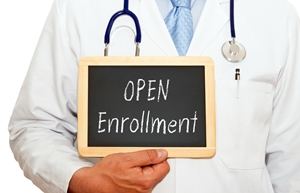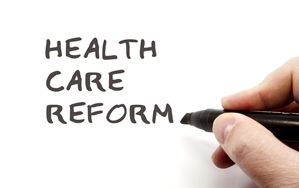
Due to a combination of factors – like employee benefits, individual initiative as well as the mandates implemented by the Affordable Care Act – fewer people are without health insurance today than in years past. However, there are still millions of people opting to go without coverage or feeling like it's time to switch providers.
It's for these reasons that the U.S. Department of Health and Human Services believes more people will purchase health insurance through the federal government or the state-based exchanges in 2016 than this year.
HHS recently announced that approximately 10 million Americans will sign up for a ACA-based insurance coverage by the conclusion of 2016. This past year, the Obama administration announced that 9 million consumers in the U.S. bought coverage through the various marketplaces, including the one at HealthCare.gov.
Sylvia Burwell, HHS secretary, pointed out that while this number may only be an estimate, it's a prediction that uses history as guideline of what to expect.
"We believe 10 million is a strong and realistic goal," Burwell explained. "We've seen high levels of satisfaction with the marketplace and expect the vast majority of our current customers will re-enroll."
She added that HHS officials are working to make sure that the people who sign up are aided by the improved navigability of HealthCare.gov, and quality customer service.
Sentiment has improved
In 2013, when the ACA officially went into effect, HealthCare.gov as well as several state-based exchange websites were riddled with glitches, preventing millions of people from selecting health plans. This led to largely negative reactions to the health care overhaul. In the two years since then, however, more people are in favor of the ACA, with 47 percent of consumers approving of it, according to a recent survey conducted by Gallup. Still, the health care law is far from being universally accepted, as 48 percent disapprove of it.
Where there's unanimity among Americans is the belief that it's a good thing when more people have health insurance, helping to reduce the out-of-pocket costs stemming from medical expenses. Between July and the end of September, the uninsured rate in the U.S. among adults 18 and older was 11.6 percent, on pace with the previous three-month period, based on polling data from Gallup. The uninsured rate has fallen more than 5 percent from two years ago, when the health care law was implemented, though the legislation itself was signed by President Barack Obama in 2010. The ensuing years were meant to give business owners and insurance companies the time they needed to adjust to the mandates prescribed under the ACA.
How much further will uninsured rate drop?
Though the ACA has had an influence on the sliding uninsured rate, it's unclear how much further it will decline in 2016 and beyond, noted Stephanie Marken, Gallup methodologist.
"There was a sharp drop in the uninsured rate when Americans were initially able to purchase health plans through government exchanges in late 2013 and early 2014," Marken explained, "but a much smaller drop during the second enrollment period in late 2014 and early 2015. Future reductions may be even smaller as those who still lack insurance may be particularly resistant to getting it or just harder to reach and guide through the process of getting health insurance."
While 33 million Americans don't have health insurance, more than 10 million of them are qualified to receive coverage from the state- or federal-based exchanges, according to Census Bureau and HHS figures. Roughly 50 percent of that 10 million are 18 to 34 years of age.





